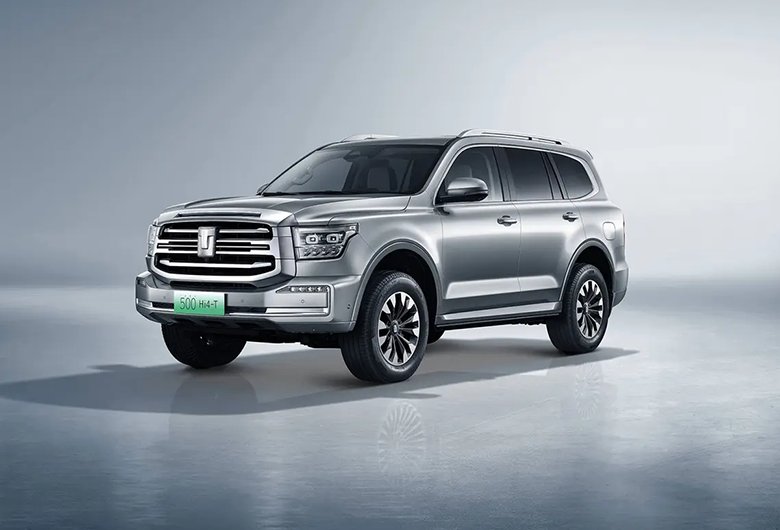
Description
- APPEARANCE
- INTERIOR
- SEAT SPACE
- DETAILS
Why Tank 500 Hi4-T has strong off-road performance
Borrowing from what Tank brand CEO Liu Yanzhao said in an interview: (Hi4-T) is based on off-road scenarios, adding the energy of new energy into it. Obviously, unlike the Hi4, which pursues maneuverability and safety and is positioned as an urban SUV[1], the Hi4-T of the Tank series is positioned as an off-road vehicle, and the core of off-road is a high degree of reliability in complex working conditions and dangerous scenarios, so to speak, to go out, to play, and to come back. This requires that vehicles with off-road performance generally have several characteristics: plenty of power (especially high torque), mechanical four-wheel drive with lock, and a highly intelligent energy management system.
First of all, power is the first letter of the Hi4-T structure, H, hybrid.
As we all know, putting an electric motor to an engine is supposed to solve power and gas mileage problems, and the Tank 500 Hi4-T is no different. This 2.0T engine already has a notable strength of 185 kW + 380 Nm, plus the 120 kW + 400 Nm of the motor, the combined power comes directly to 330 kW + 750 Nm, what is the concept? It's more torque than most luxury brand 3.0T engines. This power allows the Tank 500 Hi4-T to accelerate to zero hundred in just 6.9 seconds, for such a large SUV weighing 2.8 tons the power is really fierce, which is exactly the bottom of the off-road.
In addition, the P2 motor layout located between the engine and transmission is also a highlight, when the power of the engine and motor output in parallel, and then by the self-developed 9HAT transmission at the same time to amplify the torque of the two, which makes the vehicle under the Hi4-T architecture of the power to become very surging. And because of the existence of the torque converter, so the motor can be parallel output power with the engine, but also pure electric range, can drive while charging, but also out of the transmission into a generator (such as hanging P gear in situ with the engine to the battery to replenish energy). This motor torque is greater, the battery capacity is also large hybrid structure, which can meet the full electric mode in the long distance, high load driving, and also because of the convenience of replenishment in the daily, urban environment and bring a very good use of economy. On the contrary, some Japanese hybrid (even if also off-road inclined) with a small capacity battery + small torque motor is really waving a bright scythe to cut leeks.
Secondly, when it comes to the 4WD system, it's the 4 in Hi4-T.
Hi4-T retains the traditional non-decoupled mechanical four-wheel drive structure with Mlock mechanical locking function, the TOD system can realize 0-100% front and rear axle torque seamless switching according to the vehicle driving conditions, coupled with the "three locks" (Tank 500 Hi4-T front locks for the option), even if there is only one left in the extreme case. With the "three locks" (the Tank 500 Hi-4-T front lock is optional), even if there is only one wheel left with grip in extreme conditions, the power of the entire vehicle can be transferred to this one wheel, thus helping the vehicle to realize extrication with a huge torque.
This mechanical four-wheel drive advantage, many do not have a drive shaft but in the front and rear axle each put an electric motor pure electric or hybrid cars can not be realized (can not let one axle power transfer to another axle), but off-road tendency of the car, but it is precisely this reliable and powerful structure to deal with a variety of cross-axle, cannonball pit road conditions. In fact, not only that, but the combination of power and 4WD creates another off-road spark, which is the ability to climb hills. The official data of the Tank 500 Hi4-T shows that it has a maximum climbing ratio of 57.24, and can climb a slope equivalent to 37°, which is on the same level as the Hummer H2.
Tank U-turn: Apply a braking force to the inner rear wheel during a turn, allowing the vehicle to realize a U-turn with a radius much smaller than the normal turning radius with the inner rear wheel as the center of the circle, which is very practical for narrow scenarios;
Creep Mode: After starting the creep mode on a complex road, the vehicle will automatically drive at a lower speed without stepping on the gas pedal or brakes, and the power system will be output fully automatically, so the driver only needs to focus on controlling the direction, and safety and comfort can be taken into account;
Transparent chassis: using multiple cameras under the chassis and image processing technology, the screen presents the image directly below the vehicle, which allows you to completely see the road conditions and wheel tracks under the body when off-roading, in order to allow you to choose the best route.
Inquiry
TANK 500 HI4-T
| Model: | TANK 500 HI4-T |
| 0-100km/H: | 6.9 |
| WLTC [L/100KM]: | 2 |
| L-W-H (mm): | 5078*1934*1905 |
| Drive Type: | 4WD |
Inquiry Now






























